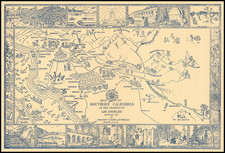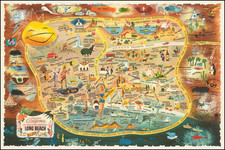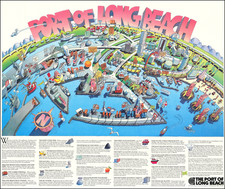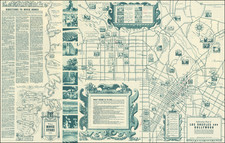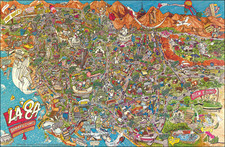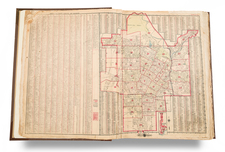Interesting early birdseye view of the are centered on the town of Sherman, which would become West Hollywood.
The view extends from Santa Monica to Hollywood and from Inglewood to Mullhollard Drive.
Includes a detailed map of Sherman on the verso, centered on the intersection of Santa Monica Blvd, Hilldale Avenue and what was then Swall Avenue, which at the time was the location of the J. Ross Charles Real Estate firm, immediately east of the Beverly Hills sign on Santa Monica Blvd.
The text promotes residential real estate, with an image of a typical house and street scene.
Sherman (West Hollywood)
The development of Sherman, which later became West Hollywood, is marked by a progressive transition from a primarily agricultural area to an influential hub in the early 20th century Los Angeles motion picture industry. Its origins lie in the expansive Rancho La Brea and Rancho Rodeo de Las Aguas, with initial developments focused on farming.
The establishment of the Los Angeles Railway by Moses H. Sherman and Eli P. Clark in the early 1890s marked the inception of the community of Sherman. This development was pivotal, not only for its immediate impact on the area's infrastructure but also for setting the stage for future growth.
Strategically positioned between the emerging centers of Hollywood and Beverly Hills, Sherman became a key location during the expansion of the motion picture industry in the late 1910s. This proximity to both the burgeoning Hollywood scene and the residential area of Beverly Hills made Sherman an attractive spot for those working in the nascent film industry.
Sherman's evolution was significantly influenced by the railway system. Sherman and Clark's involvement in railway development was instrumental in connecting Sherman to the broader Los Angeles region. The railyard and the surrounding subdivisions laid the groundwork for the town's initial urban layout, characterized by a mix of residential and industrial areas.
The early 20th century saw Sherman further develop as film studios began to establish themselves in the area. This era marked a shift in the town's character, transitioning from its agricultural roots to becoming a part of Los Angeles' urban landscape. The presence of film studios and personnel in Sherman intertwined its story with that of the early Hollywood film industry.











